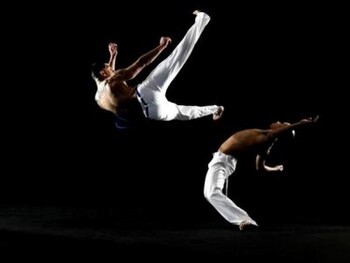Capoeira

Capoeira is not simply a martial art but is also a dance. It was practised in Brazil originally by those Africans who were enslaved and because they were forbidden to fight at all by those in power, , Shape Collage these early Capoeirists hid the sheer power try, Big RC Tank of this style through dance. Slaveholders did not feel that the Capoeira was a threat though as the ‘dance' was accompanied by the berimbau, a unique percussion instrument and the atabaques (drums) and appeared to be non-aggressive. Even in today's modern society, music is still very central to the art and it generally occurs within a circle with singers and musicians accompanying them.
The movement is considered rhythmic with the two players (they are not called martial artists) attacking and counter-attacking without ever striking the other.
The first Capoeira academy was opened in 1932 after efforts by the government were increased to promote it as a Brazilian sport. The style was changed significantly at that time and the more' ritualistic' aspects of Capoeira were dropped for a more aggressive fighting style. The new style was called ‘Capoeira Regional'.
Nine years later in 1941, Mestre Pastinha opened his own school and this school then began to teach the more traditional style renamed as ‘Capoeira Angola'. Nowadays, students all over the world can either study ‘Regional' or ‘Angola' styles or sometimes a combination of both.
Because Capoeira combines martial arts with the rhythmic fluid motion of dance, it makes it an excellent choice for those who like variety and are drawn to dance movements coupled with martial arts technique.
Featured Articles
 Used Display Cases Used Display Cases
Buying used display cases can be a great money saver and an even better way of getting an antique ca |
 Coin collecting Software Coin collecting Software
If you are looking for some good coin collecting software to help you organize and manage your coin |
 Watercolour DVD Watercolour DVD
When using a watercolour DVD, ensure that you study and listen carefully to the presenting artist so |
 Boat Building Kits Boat Building Kits
Boat building kits are one of the newest additions to this, otherwise, age-old tradition of boat bui |
 Arabic Calligraphy Arabic Calligraphy
Arabic calligraphy is a form of calligraphy based on the Arabic script. In ancient times, Arabic cal |
Popular search terms people have used to find this page are https://www.google.com (75.00%), capoeira worth it (25.00%)